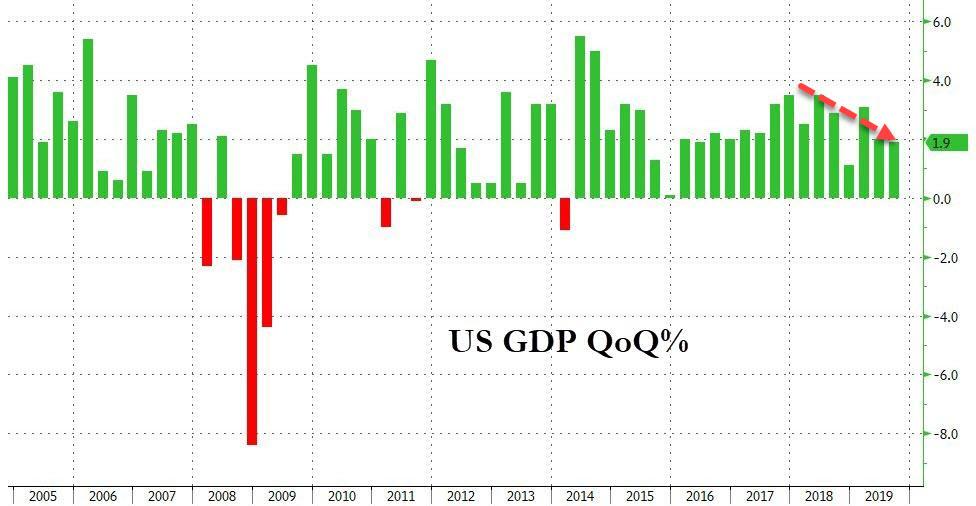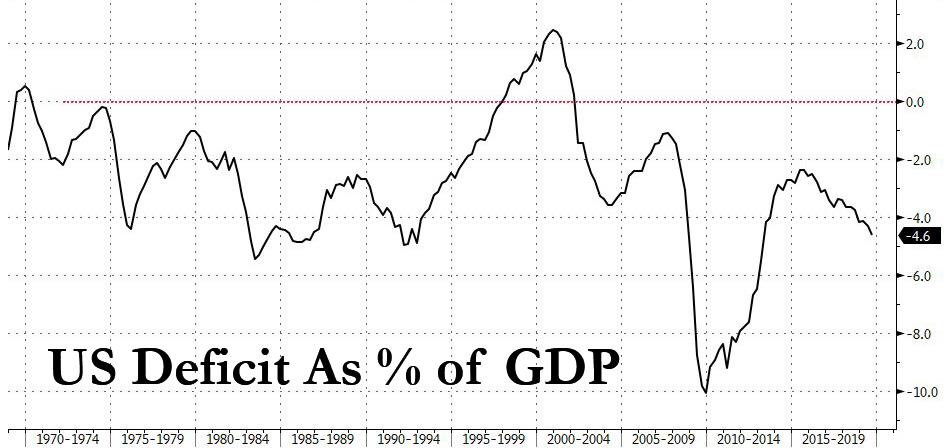A Fiscal Policy “Flop”: The US Gov’t Spent Hundreds Of Billions, And GDP Slowed
Submitted by Joseph Carson, Former Director of Global Economic Research, Alliance Bernstein
Its now nearly two year since the Trump Administration and Congress passed major tax cuts for businesses and individuals and followed that legislative initiative up with a relatively large increase in spending for defense and discretionary non-defense programs. The economic results from these tax and spending programs are in and the overall growth numbers are disappointing to say the least, and it would not be wrong to characterize these legislative initiatives as a fiscal policy “flop”.
Over the last seven quarters real GDP growth has averaged 2.4%, which matches the 2.4% growth in 2017, the year before the entire fiscal stimulus took place. Simply put, even though the federal government spent more money (estimated to be $300 billion for various programs) and reduced taxes for businesses and individuals the underlying growth rate of the economy did not change one iota.
As disappointing as the growth numbers have been, the fiscal bill from these legislative initiatives is growing and contrary to public assertions these fiscal stimulus programs will never pay for themselves.
In the fiscal year ending on September 30, the US recorded a $984 billion deficit, more than $300 billion above the budget deficit recorded in fiscal year 2017, the year before the tax cut and spending programs were passed by Congress.
Measured in relation to GDP, the budget deficit equaled 4.6% of GDP in the fiscal year ending at the end of the third quarter of 2019, almost 100 basis points above the 3.7% growth in nominal GDP over the same time frame.
That unbalanced relationship – the budget deficit as a percent of GDP running above the growth in nominal GDP – has been a unique feature of the current decade long business cycle and is something that never ever happened during any other economic expansion of the post-war period. Even if money was free (which it isn’t) there is something wrong with this math.
Budget projections from the Congressional Budget Office indicates that the scale of the budget deficit will continue to outpace the growth in nominal GDP by nearly one percentage point over the next decade. Critics may argue that long run forecasts are notorious for being off the mark, but it is worth pointing out that budget forecasts by CBO in the summer of 2009 under-estimated the growth in the budget deficit for the next 10 years by more than $2 trillion – so to be fair there are upside and downside risks to future budget projections.
It’s premature to say that the US government has entered into a “debt trap”. Unlike businesses and individuals which at some point run into market-determined borrowing limits and face margin calls, the federal government has deep pockets in the form of a “printing press”. Nonetheless, it is impossible to deny that recent fiscal decisions have not worsened the US short run and long run outlay and revenue imbalance. Politicians show no appetite to address the growing budget imbalance so “market forces” (i.e. dollar re-alignment since the US is massively dependent on foreign capital) will eventually at some point reduce the scale of the imbalance.
Let’s hope it’s an orderly adjustment.
Tyler Durden
Thu, 10/31/2019 – 18:45
via ZeroHedge News https://ift.tt/2WxWRdv Tyler Durden

